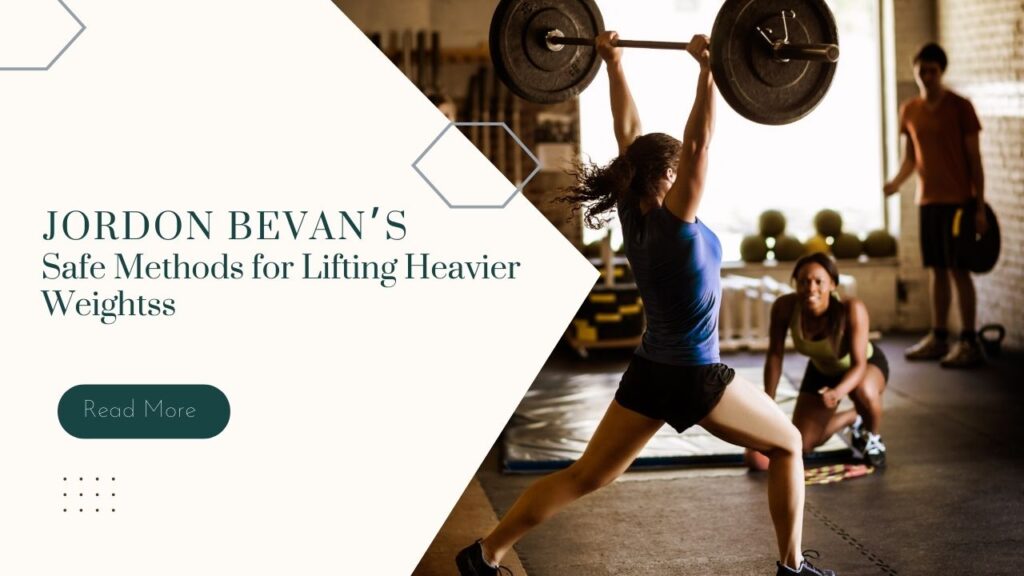Increasing your lifting weights can be an exciting journey, but it also comes with its own set of challenges and risks. Jordon Bevan, a seasoned conditioning coach, emphasizes the importance of safety and proper technique when pushing your limits in the gym. In this article, we’ll explore his top tips for safely increasing your weights, allowing you to build strength without compromising your health.
Jordon Bevan: A Commitment to Safety and Strength
Jordon Bevan is not just a conditioning coach; he is a passionate advocate for safe lifting practices. With years of experience in the fitness industry, he has helped countless individuals achieve their strength goals while minimizing the risk of injury. His approach focuses on education, technique, and the importance of listening to one’s body.
Understanding Your Current Limits
Before you even think about adding more weight to your lifts, it’s crucial to understand your current capabilities. Jordon suggests starting with a self-assessment to determine your baseline strength. This involves identifying the maximum weight you can lift for a specific exercise while maintaining proper form.
Assess Your Form
Proper form is the foundation of safe lifting. Jordon recommends practicing your lifts with lighter weights to ensure that your technique is solid. This not only helps prevent injuries but also sets the stage for future progress. Consider recording yourself or working with a coach to analyze your form and make necessary adjustments.
Gradual Progression is Key
One of Jordon’s core principles is the importance of gradual progression. Instead of making significant jumps in weight, aim for small, incremental increases. This method allows your muscles, tendons, and ligaments to adapt to the added stress.
The 5% Rule
A common guideline is the 5% rule—only increase your weights by about 5% when you feel ready to progress. This might seem minimal, but over time, these small increases can lead to significant gains. For example, if you’re lifting 100 pounds, increase to 105 pounds rather than jumping to 110 pounds.
Listen to Your Body
Listening to your body is paramount when it comes to weightlifting. Jordon emphasizes the importance of being in tune with how you feel during and after your workouts. If you experience pain or discomfort, it may be a sign that you need to scale back or reassess your technique.
Recognizing Signs of Overtraining
Overtraining can lead to injuries and setbacks. Signs include chronic fatigue, decreased performance, and persistent soreness. If you notice these symptoms, it may be time to take a step back, allow your body to recover, and adjust your training regimen.
Incorporate Rest and Recovery
Rest and recovery are often overlooked components of a successful lifting program. Jordon stresses that muscles need time to repair and grow stronger after intense workouts. Schedule regular rest days into your routine, and consider incorporating active recovery sessions, such as light cardio or stretching.
The Importance of Sleep
Sleep plays a critical role in recovery. Aim for 7-9 hours of quality sleep each night to support your body’s healing processes. Lack of sleep can hinder your performance and increase the risk of injury, making it essential to prioritize rest.
Focus on Nutrition
Proper nutrition is vital for any fitness journey, especially when increasing your lifting weights. Jordon advises focusing on a balanced diet rich in protein, healthy fats, and complex carbohydrates.
Fueling Your Workouts
Before your workouts, consume a meal or snack that provides adequate energy. Foods like bananas, oatmeal, or a protein shake can help fuel your session. Post-workout, aim to replenish your body with protein and carbohydrates to support recovery.
Utilize Proper Equipment
Using the right equipment can enhance your lifting experience and reduce the risk of injury. Jordon recommends investing in quality lifting gear, such as weightlifting shoes, belts, and wrist wraps, to provide additional support and stability during your lifts.
Safety Measures
Always use safety measures like spotters or safety bars when lifting heavy weights. This extra layer of protection can prevent accidents and give you the confidence to push your limits.
Vary Your Routine
To avoid plateaus and keep your workouts engaging, Jordon encourages varying your lifting routine. This doesn’t mean changing your entire program but rather incorporating different exercises, rep ranges, or lifting techniques.
Try Different Lifting Styles
Experiment with styles such as powerlifting, bodybuilding, or Olympic lifting. Each has its unique focus and can help you develop strength in different ways. Additionally, varying your routine can prevent overuse injuries by targeting different muscle groups.
Set Realistic Goals
Setting achievable goals is crucial for maintaining motivation and tracking progress. Jordon advises breaking larger goals into smaller, manageable milestones. Celebrate each achievement, no matter how small, to keep your spirits high and your focus sharp.
Keep a Training Log
Maintaining a training log can help you track your progress, identify patterns, and make informed decisions about your training. Document your lifts, weights, and how you felt during each session to gain insights into your performance over time.
Conclusion
Increasing your lifting weights can be a rewarding experience, but safety should always be your top priority. By following Jordon Bevan’s expert tips—understanding your limits, progressing gradually, listening to your body, prioritizing rest and nutrition, using proper equipment, varying your routine, and setting realistic goals—you can build strength effectively and safely. Remember, the journey to becoming stronger is a marathon, not a sprint.

